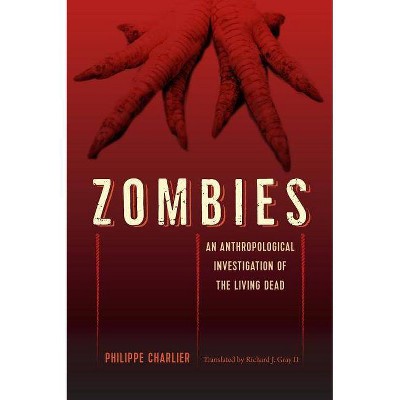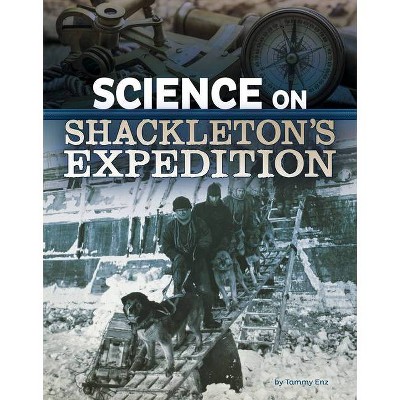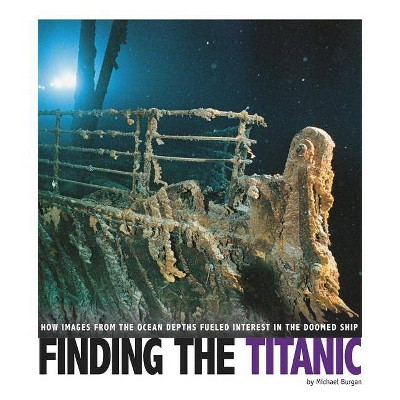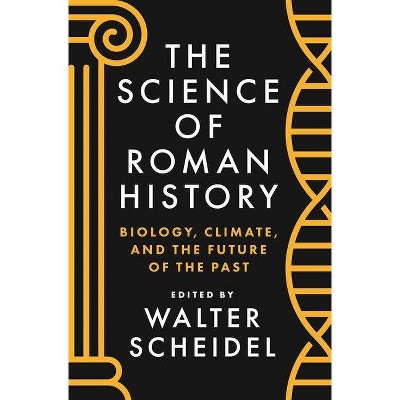When Science Sheds Light on History - by Philippe Charlier (Paperback)
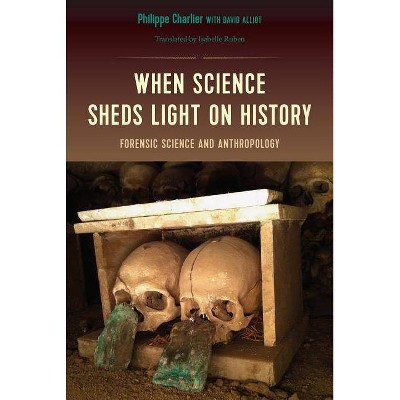
Similar Products
Products of same category from the store
AllProduct info
<p/><br></br><p><b> About the Book </b></p></br></br>"Did Richard the Lionheart really die from a simple crossbow wound, or was there foul play? Who are the two infants buried in Tutankhamun's tomb? Could a skull found in a tax collector's attic be the long-lost head of Henri IV? In When Science Sheds Light on History, Philippe Charlier, the "Indiana Jones of the graveyards," travels the globe to unravel these and other unsolved mysteries of human history. To get answers, Charlier looks for clues in medical records, fingerprints, and bloodstains. He reconstructs the face of Robespierre from masks molded from his body after death and analyzes charred bones to see if they really are Joan of Arc's. He discovers lethal levels of gold in the hair and bones of King Henry II's mistress Diane de Poitiers, who used gold salts to "preserve her eternal youth." Charlier also pieces together the stories of people whose names and lives have long been forgotten. He investigates Stone Age graves, medieval necropolises, and museum collections. Playing the role of both crime-scene investigator and forensic anthropologist, Charlier diagnoses a mummy with malaria, an ancient Greek child with Down syndrome, and a stately Roman with encephalitis. He also delves into ancient miracles and anomalies: a mute boy able to speak after making sacrifices to the gods, a woman pregnant for five years, and a serpent that cured a broken toe with its tongue. Exploring how our ancestors lived and how they died, the forty cases in this book seek to answer some of history's most enduring questions and illustrate the power of science to reveal the secrets of the past."--Amazon.com.<p/><br></br><p><b> Book Synopsis </b></p></br></br><p>Did Richard the Lionheart really die from a simple crossbow wound, or was there foul play? Who are the two infants buried in Tutankhamun's tomb? Could a skull found in a tax collector's attic be the long-lost head of Henri IV? In <i>When Science Sheds Light on History</i>, Philippe Charlier, the "Indiana Jones of the graveyards," travels the globe to unravel these and other unsolved mysteries of human history.</p><p>To get answers, Charlier looks for clues in medical records, fingerprints, and bloodstains. He reconstructs the face of Robespierre from masks molded from his body after death and analyzes charred bones to see if they really are Joan of Arc's. He discovers lethal levels of gold in the hair and bones of King Henry II's mistress Diane de Poitiers, who used gold salts to "preserve her eternal youth."</p><p>Charlier also pieces together the stories of people whose names and lives have long been forgotten. He investigates Stone Age graves, medieval necropolises, and museum collections. Playing the role of both crime-scene investigator and forensic anthropologist, Charlier diagnoses a mummy with malaria, an ancient Greek child with Down syndrome, and a stately Roman with encephalitis. He also delves into ancient miracles and anomalies: a mute boy able to speak after making sacrifices to the gods, a woman pregnant for five years, and a serpent that cured a broken toe with its tongue.</p><p>Exploring how our ancestors lived and how they died, the forty cases in this book seek to answer some of history's most enduring questions and illustrate the power of science to reveal the secrets of the past.</p><p/><br></br><p><b> Review Quotes </b></p></br></br><br>"Charlier, a French forensic medical examiner and specialist in ancient human remains, brings together summaries of his case studies--which include bones and bodies taken from prehistoric caves, charnel houses, royal tombs, and communal burials--to demonstrate what such remains can tell researchers. . . .Delves into historical mysteries: for instance, bottles of wine said to contain the ashes of Joan of Arc instead turn out to hold remnants of burned Egyptian mummies. The book is full of similarly fascinating bits of trivia."--<i><b>Publishers Weekly</i></b> "A series of scientific vignettes showing how forensic science can update our understanding of history."--<i><b>New Historian</i></b> "Illuminates the world of the living."--<i><b>Inside Higher Ed</i></b><br><p/><br></br><p><b> About the Author </b></p></br></br><b>Philippe Charlier</b>, a researcher at Raymond Poincare University Hospital and researcher-teacher at Paris Descartes University, is a forensic medical examiner, anatomopathologist, and paleopathologist, specializing in the study of ancient human remains and mummies. He is the author of <i>Zombies: An Anthropological Investigation of the Living Dead</i>.
Price History
Price Archive shows prices from various stores, lets you see history and find the cheapest. There is no actual sale on the website. For all support, inquiry and suggestion messagescommunication@pricearchive.us
